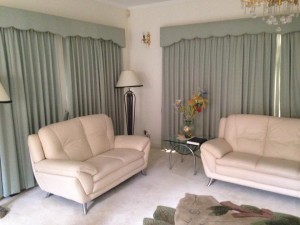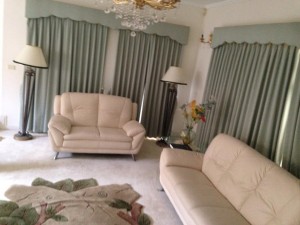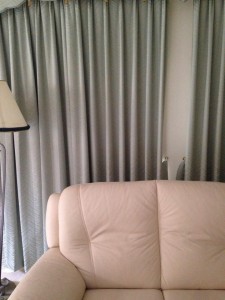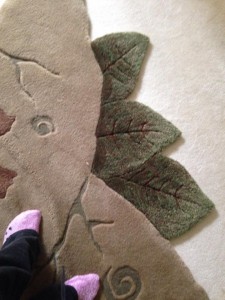I’ve attached a few photos so as to elaborate on the location/set of my project. As previously mentioned we are filming in my living room. This particular room is the most elegant room in my house, you know, that one you can’t enter unless the queen visits. For this reason and many others i think it is the perfect location.
Firstly, it’s dimensions are : 4m x 2.5 m with a height of 2.75 m (meaning it is long enough to get a decent tracking shot and high enough to fit the crane above the dolly and tripod)
Secondly, the design/colour palette: the room looks homey and even with the natural lighting of the day has a warm tone of colours including cream, green, yellow, red etc. The wide cream coloured couch perfectly contrasts with the red dress I will be wearing so as to emphasise the subject of the frame. The lighter shade of green that drowns the background curtains frames the couch symmetrically, with one lamp on each side of the frame. There’s a subtle eeriness about this. It is almost too symmetrical. I am reminded again of Wes Anderson’s work where his symmetry in fact works to also emphasise the elusiveness of the world within the frame. I want to achieve the same effect but so subtly so that in hindsight, after the scene is viewed, the audience can look back and realise everything seemed too perfect .
Thirdly: Logically, we are in the middle of autumn therefore to film outside is a risk I am not willing to take. For this particular project I want the comfort of knowing I can manipulate the extraneous variables more easily so that I can focus on my particular goal. Here the lighting is much more in my hands. I am ensure the dolly and the tracks are on dry ground (if wet the tracks could move, more dangerous for equipment and those holding it).



